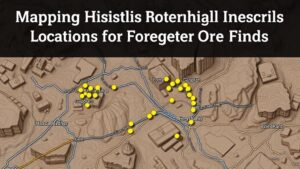Training AI to Map Likely Relic Sites Using Historical Weather and Climate Data
Training AI to Map Likely Relic Sites Using Historical Weather and Climate Data
The integration of artificial intelligence (AI) with historical weather and climate data is transforming the methodologies employed in archaeological studies. By harnessing machine learning algorithms, researchers can predict potential locations of archaeological relics, improving the efficiency of excavation and discovery. This paper explores the methodologies, findings, and implications of training AI for mapping likely relic sites through a nuanced analysis of historical climatic conditions.
Theoretical Framework
Artificial Intelligence, particularly machine learning, has the potential to process vast datasets that include climate variables such as temperature, precipitation, and wind patterns. This section provides a foundational understanding of how historical data correlates with archaeological presence.
Historically, relics are found in locations influenced by past climates. For example, the presence of ancient settlements often coincides with fertile agricultural land, which is typically associated with specific climatic conditions. Data from the National Oceanic and Atmospheric Administration (NOAA) indicates that certain areas in Mesopotamia, such as the Tigris-Euphrates river valley, flourished between 5000-2000 BCE under favorable climatic conditions.
Methodology
The approach to training AI for mapping involves several key phases, including data collection, preprocessing, algorithm selection, and model training.
- Data Collection: This includes collecting historical weather and climate data from sources such as the NOAA and the Global Historical Climatology Network (GHCN) along with archaeological site data from the Archaeological Data Service.
- Data Preprocessing: Cleaning the data to ensure quality and relevance is crucial. This may involve handling missing values or normalizing data formats.
- Algorithm Selection: Various machine learning algorithms like Random Forest, Support Vector Machines, or Neural Networks can be employed based on the nature of the data and the specific goals of the research.
- Model Training: The selected algorithm is trained using input features derived from weather data (e.g., average rainfall, drought periods) to predict potential relic sites.
Case Studies
This research draws on several case studies where AI has been successfully applied to archaeological predictions.
- Case Study 1: In 2019, researchers used machine learning to identify potential archaeological sites in the Nile Valley by analyzing climate patterns from 3000 BCE to 200 CE. The study found correlations between settlement patterns and changes in the rivers flow attributed to historical climate shifts.
- Case Study 2: The Lost Cities project in Southern California employed AI algorithms trained on historical precipitation and settlement data which successfully predicted locations of Native American sites that had not been previously documented.
Challenges and Considerations
While the integration of AI and historical climate data presents significant opportunities, it also poses certain challenges. These include:
- Data Integrity: The reliability of predictions is contingent on the quality of the historical data utilized. Inconsistent or incomplete records can lead to misleading results.
- Cultural Heritage Sensitivity: The discovery of new archaeological sites necessitates careful consideration of cultural significance and potential impacts on local communities.
Conclusion and Future Directions
The application of AI in mapping relic sites through historical weather and climate data is revolutionizing archaeological research. This intersection of technology and history facilitates more scientifically-informed excavations, saving both time and resources while enhancing the preservation of cultural heritage. Future research should focus on improving data collection methods, refining machine learning algorithms, and developing collaborative frameworks that incorporate local knowledge and perspectives in the exploration of archaeological sites.
To wrap up, the nuanced interplay of AI and historical data holds promise for enhancing archaeological practices, potentially leading to the discovery of invaluable relics that offer insights into human history.


